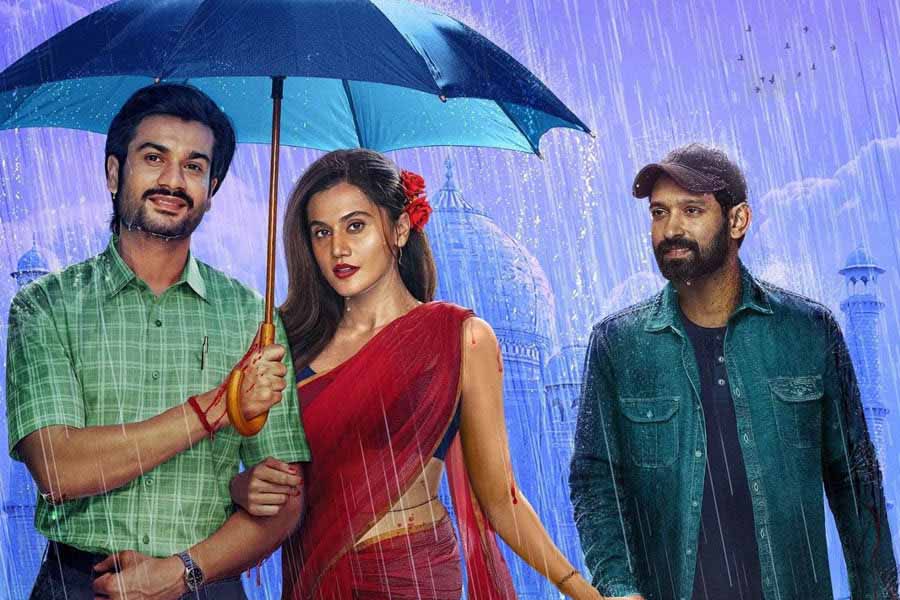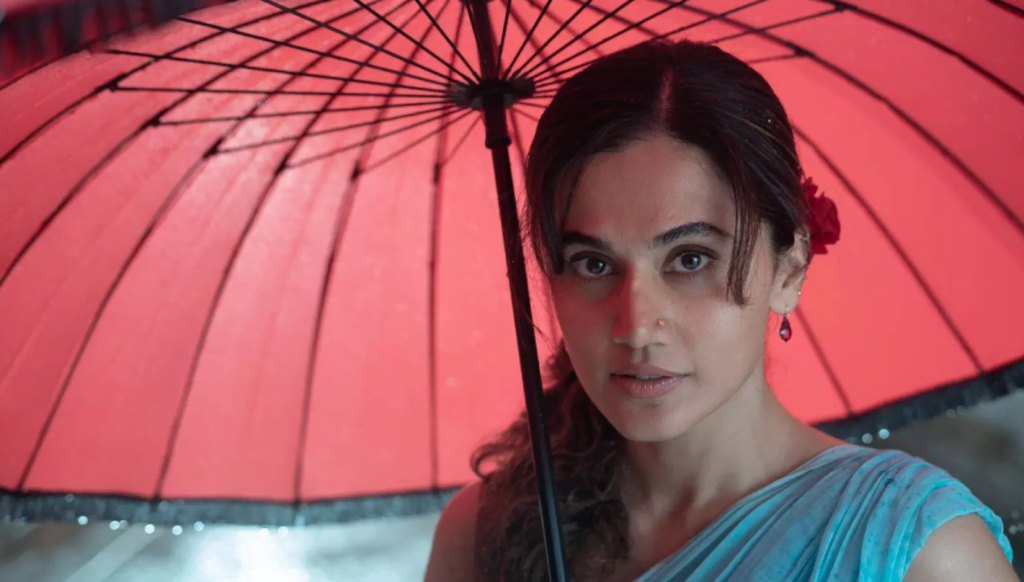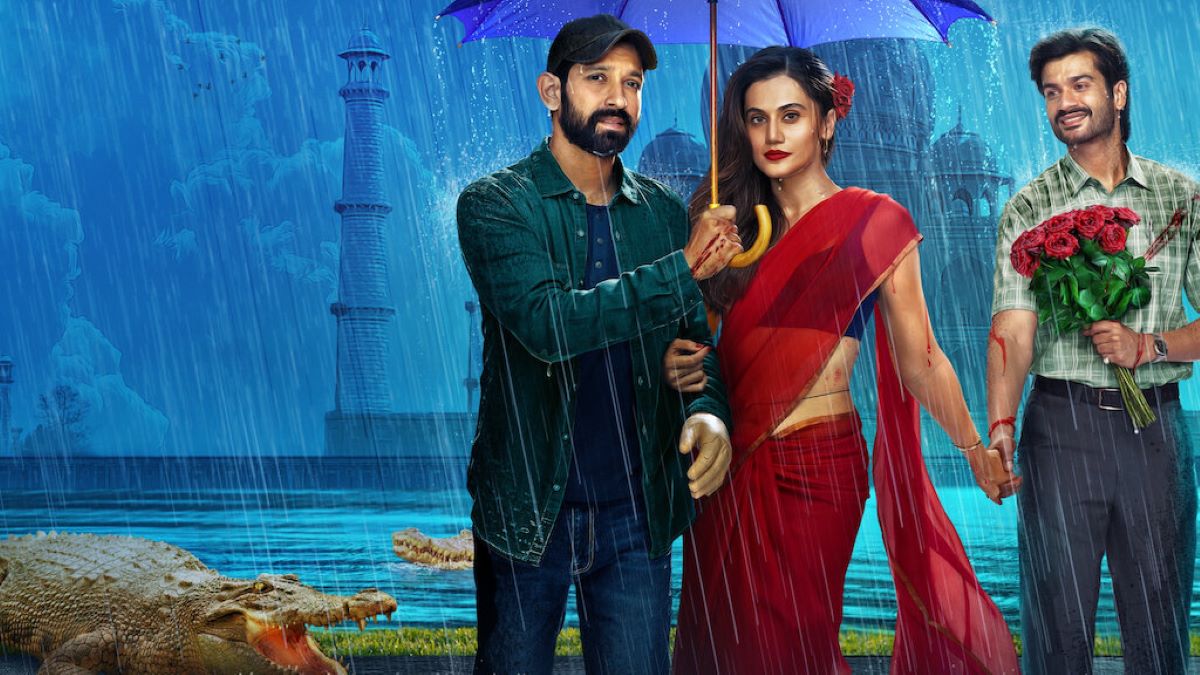“If love doesn’t push the boundaries of insanity, it’s not true love. The passionless duty of a relationship is for the sane,” – do we need another film justifying violence for the sake of love? Should Haseen Dillruba have returned?
“Jo pagalpan ki hadd se na guzre, woh pyaar hi kya. Hosh mein toh rishte nibhaye jaate hain.” We start the second offering of Haseen Dillruba, from where we bid goodbye to its first, both written by Kanika Dhillon. To roughly translate the sentiments – “If love doesn’t push the boundaries of insanity, it’s not true love. Passionless duty of a relationship is for the sane.” This is a horrifying sentiment for any average woman as we keep updating our roster of passionate and dispassionate crimes against women every day. But one must shelve the real effects of such “romantic” platitudes to enjoy a hard-boiled noir, especially one mixed with a taste of desi pulp fiction – especially in the hope of redemption. But can we?
Before we delve into the politics of the Phir Aayi Hasseen Dilruba, let us get the basics out of the way. The first film Haseen Dillruba, directed by Vinil Mathews, was released in 2021 on Netflix. It created a lukewarm but credible acceptance amongst the general audience and critics. Right after a global pandemic, we were both starved for fresh content and excitement. It provided a generous mixture of humour, suspense, violence, lust, and something strange and vile that masqueraded as love. But what rose as a singular force and steer for the narrative was the spectre of the author who refuses to die – Dinesh Pandit. Moral bankruptcy is not as difficult to digest as romanticising domestic violence, especially by the victim and the indirect narrator.
The Hindi pulp fiction writer is a completely fictional character who not only has some advice about what “true love” is but also a list of how-to-dos about committing the perfect crime. Despite the infuriating and uncomfortable minutes of watching a lovelorn simpleton flip into a cold-blooded criminal on the verge of uxoricide, the first film was a technical bliss – from writing to pacing, editing to performances. Vikrant Massey stood out in his portrayal of the sweet nervous, absolute maniac Rishu. Tapsee Pannu’s Rani, though smothered by the archetype of Savita Bhabhi, shines through. Aditya Srivastava’s Inspector Kishore was equal parts nostalgic and fantastic – his frustrated scream to present Pandit Ji at the police station reflected the audience’s feelings. Add to that the hilarious mix of Rishu’s parents – right out of the small-town films like Bareilly ki Barfi or Tanu weds Manu. The same cannot be said about the second.
An exuberant frame for a very dull picture
Phir Aayi Haseen Dillruba tilts further into the amoral insanity of love. But it fails to turn the belly of this monster inside-out – instead continues to romanticise it. Honestly, this was as frustrating as watching Arjun Reddy get a happy ending. We would much rather have had Montu Chacha turn into an actual “kadhphodua” (woodpecker) and turn this into a gory chase film. Too much to expect from what turns out to be picking on the romance aspect of pulp fiction and not its gory crime underbelly.

Phir Aayi Hasseen Dillruba opens in a new city where the star-crossed lovers (ugh) are living separately, awaiting a quick escape to Thailand. None of their families are involved anymore – this is supposed to be a fresh start. Stylistically it is. The second film is directed by Jayaprasad Desai and distributed by Netflix. Dhillon continues as the writer but she seems to have lost trust in her audience even further as every plot point is explained and underlined – as if we are infants. The pacing is mind-numbingly slow for a crime thriller. The camera movements and almost military-level colour-coding of the scenes cannot save the story – an exuberant frame for a very dull picture.
Two psychopaths in love is a recipe for mischievous notoriety but unfortunately, the film takes a turn towards playing them as victims. Who is buying that? This film would make little sense to anyone who has not watched the first. And someone who has, would not take Rani and Rishu as anything other than the demented masochists they are. “Kismat ki lakeeren haath pe chapi hoti hai dost. Humne toh apni mohabbat ke liye hath hi kaat ke phenk diya” says our agonised hero – Rishu. Super corny and misplaced – because neither was he a victim of that violence nor was this “mohabbat” anything other than a mad obsession to possess. This anguished hero hurts the eye, it would have been much more fitting if that singular act of murder had given leave to the two “ordinary” characters to reveal their psychosis. The obsession with Pandit could have been the single most horrifying driver of the narrative but it is pushed instead as a backdrop – quite literally as our protagonists turn into local graffiti artists. So, if our protagonists are victims, we need a new villain.
Enter Sunny Kaushal as Dr Abhimanyu. (His surname is the most limp attempt at a climax-reveal.) Dr Abhimanyu has upped the ante – from an engineer we have graduated to a doctor and serial killer. As if the writer was not convinced by the portrayal of Rishu-Rani’s victimhood – we bring in a second villain to their “love” story. Jimmy Shergill tries his best to be the menacing police officer cum Rishu’s vengeful relative – Montu Chacha. If one is not tired of the messy plotline halfway through the film – there is more of it on the other side.
Montu Chacha, Pandit Ji’s son, the Mutton Leg and the Haseen Dillruba
The first film operates on the trope of the femme fatale-esque characteristics of Rani who draws pleasure from life and uses spite to make life decisions – but somehow she has turned into its soggy replica in the second film. She lacks the spark or the drive in this film. To break her character further into a helpless woman – she is beaten up in the police station till Rishu surrenders (not).

The one character who creates some intrigue in the first half is Poonam – a sassy and horny woman who is Rishu’s landlady. She has a damaged leg from yet another love-induced accident. She is tactful, snide, and just the right amount of grey. But the narrative fails to give her any space but that of an alibi. Sunny Kaushal does have the right amount of creepiness in his smile. His task was to make the original psychopaths look mild, and he almost did the job. But Vikrant Massey looked as unconvinced as the audience with Rishu’s characterisation. The script jumps, bends, and contorts to keep Rishu out of jail and keep Rani as the lovely wife who is caught in the wrong turns of a narrative she has no control over.
There are two consistent characters in the two films – Pandit Ji and the mutton raan or leg. The latter made its debut as a murder weapon and in the second makes a cameo as an aid to a crucial escape plan. Pandit Ji’s Kailash ka Kehr makes way for Magarmach Ka Rahasya. This time it is also a battle of the fandom – Rani’s suitcase full of the pulpy novels to Dr Abhimanyu’s cupboard of Pandit Ji’s Every Flavour Crimes. The premise is juicy and bold – with the right balance of smut and violence, this series could have been our LSD meets Monica O My Darling. But it is a poor and unnecessary imitation of the tox-masc revival in Indian cinema – where we brush domestic violence and toxic love under the carpet, then set up a household of romanticised psychopaths on it.
There is nothing against ugly, horrifying, and dark characters – nothing reflects our time than such portrayals. But to continuously justify their actions under the flimsy excuse of romance – is not only dated and boring, but detrimental and irresponsible in the current world.
About the author(s)
She/they is an editor and illustrator from the suburbs of Bengal. A student of literature and cinema, Sohini primarily looks at the world through the political lens of gender. They uprooted herself from their hometown to work for a livelihood, but has always returned to her roots for their most honest and intimate expressions. She finds it difficult to locate themself in the heteronormative matrix and self-admittedly continues to hang in limbo




